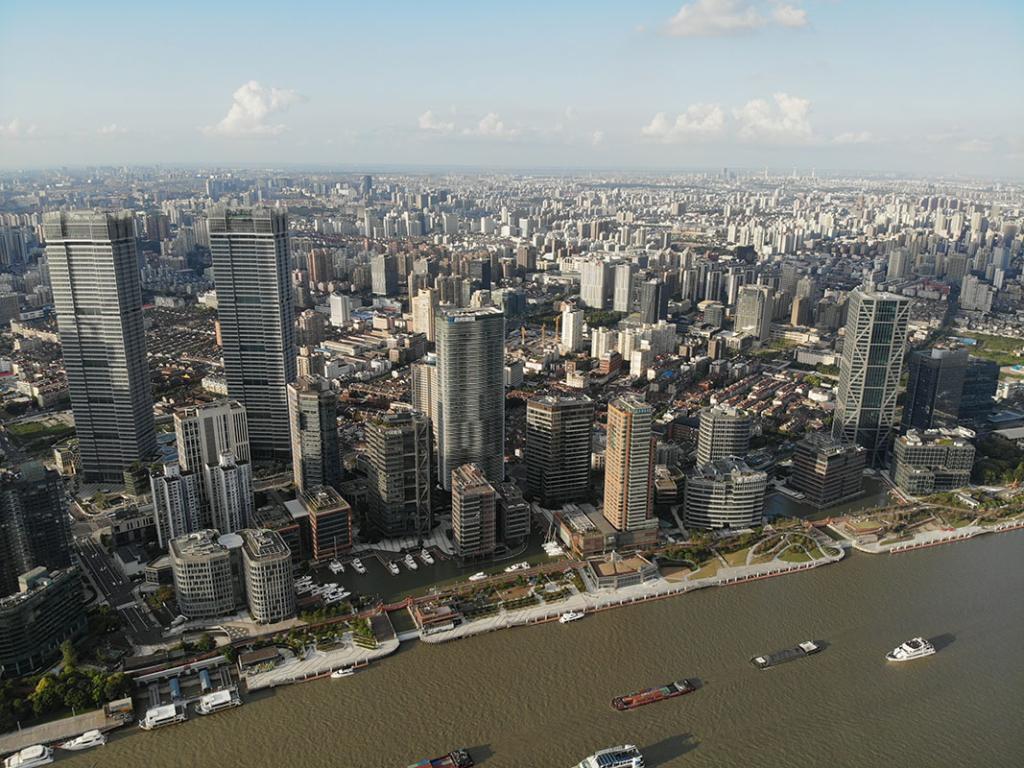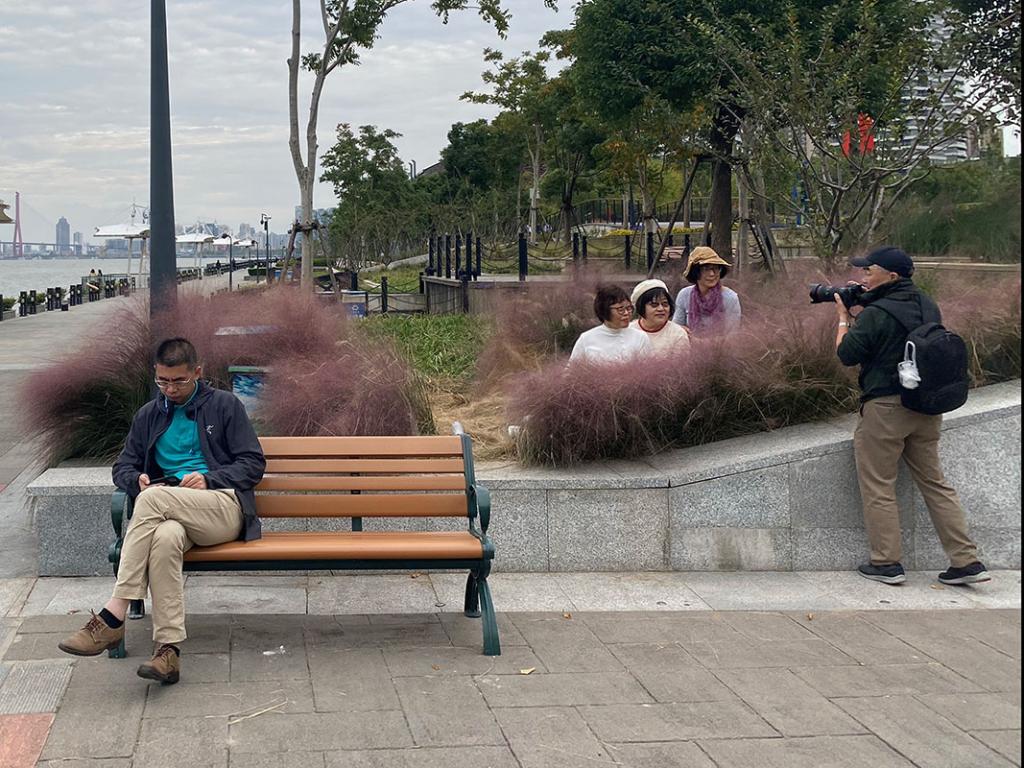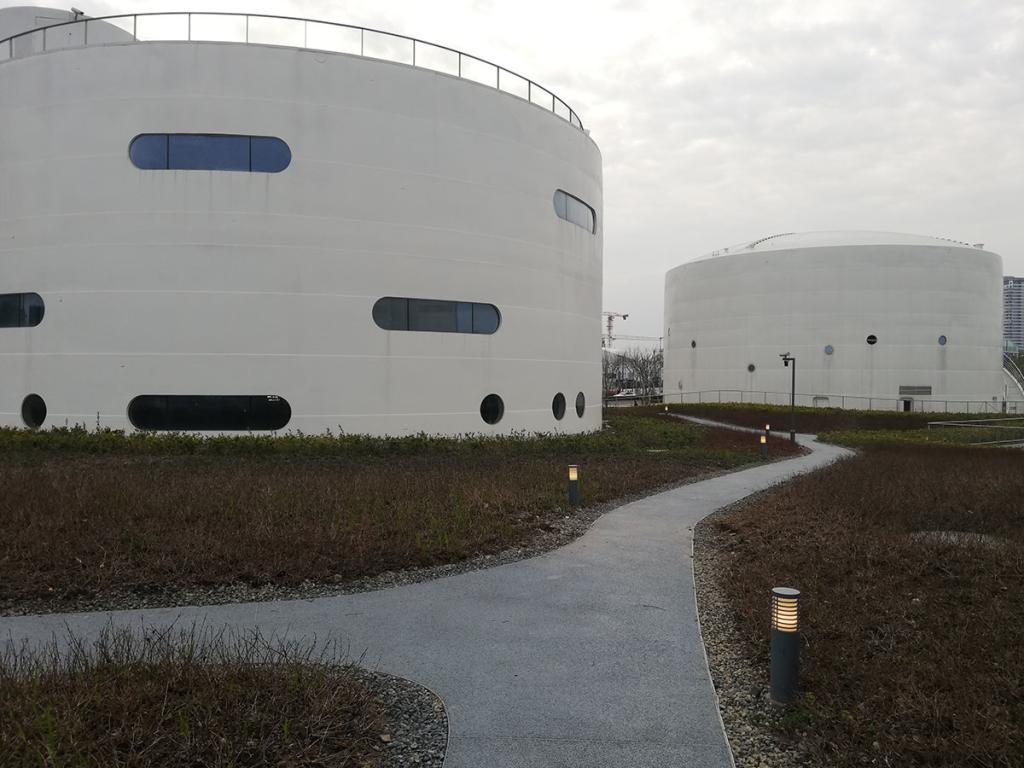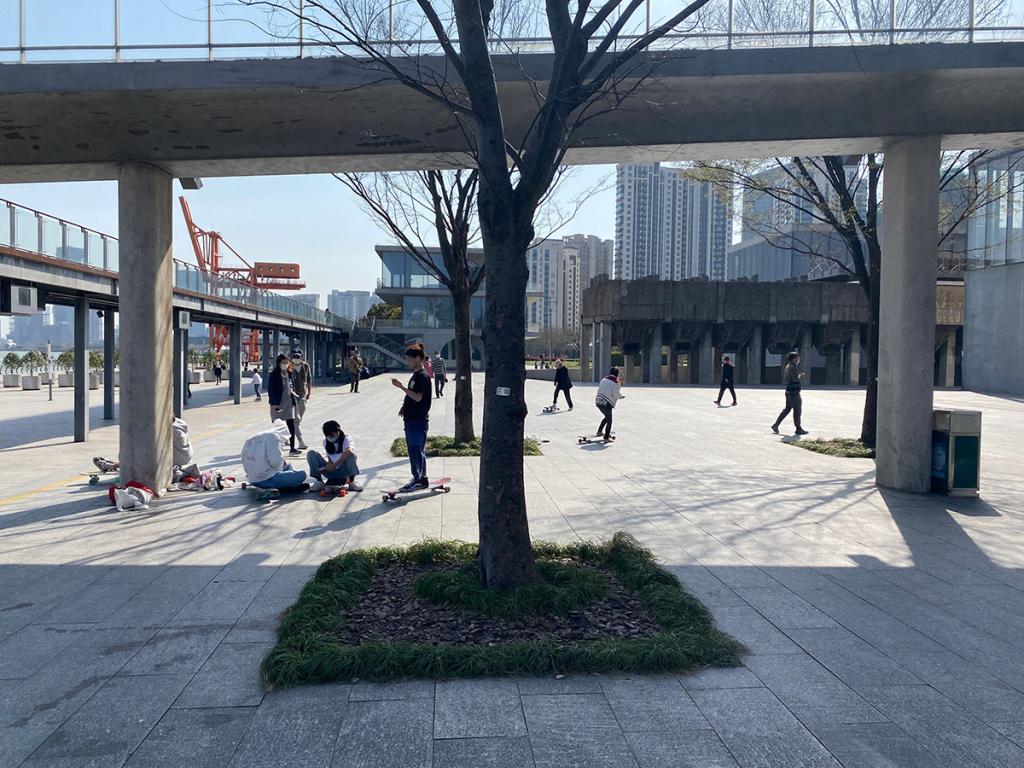Harry den Hartog
Since the beginning of the 21st century, Shanghai has started to relocate its ports far outside the urban core to accommodate the expected massive urban growth and to allow the new ports to further develop. This created an opportunity for urban regeneration of the formerly inaccessible and polluted waterfronts of the Huangpu River, a manmade tributary of the Yangtze and the central waterway of Shanghai. In this blog, urban designer Harry den Hartog assesses how Shanghai could execute this extremely fast regeneration, and identifies the downsides of a waterfront that is especially useful for taking selfies.
The Yangtze River Delta region in China used to be the dynamic scenery of daily life activities along waterways and in canal towns (King, 1911; Ball, 2017). However, industrial development had made many of these waterfronts dirty and smelly, while others became repositories of household waste. Living by the waterside was an unattractive option in Shanghai for a long time as it had negative connotations of pollution, industries, and poor working-class accommodation. During the last three decades of massive urbanization, many waterways and canal towns even disappeared to make place for urban expansion.
This all changed since the Expo 2010 in Shanghai. Located central along the Huangpu River, the Expo 2010 played a key role in redefining Shanghai’s relationship with its waterfronts under the motto “Better City, Better Life”. The redevelopment of Suzhou Creek – a canalized tributary of the Huangpu and until a decade ago one of the most polluted water outlets in the world - is indicative of a change in official attitudes. Luxurious new housing complexes have sprung up along its banks, overlooking the newly odor-free river. According to Shanghai’s current master plan, the Huangpu River waterfront is earmarked to be a “demonstration zone for the development capability of the global city of Shanghai.” Already today this ambition has been partially achieved. During the last few years, almost half of the Huangpu’s 120 kilometers of waterfront has been transformed, at an unprecedented speed and in high quality. Additionally, another 100 kilometers of waterfront along the Suzhou Creek are in preparation of being transformed.
The former ports along the Huangpu River, which used to be China’s industrial nursery and starting point for international trade since the Treaty of Nanjing in 1842, are being transformed into a space for urban life and leisure. In poetic phrases, the city’s latest master plan, “Shanghai 2017-2035, Striving for an Excellent Global City”, describes how the river will be returned to the people of this city. This transformation however is not only used for ‘beautification’ and to bring back ‘harmony’ - two key concepts in Chinese urban planning - but especially to transform the waterfront spaces into an economic engine yet again. The newly made scenic waterfront has become the backdrop for massive speculative real estate projects and is expected to transform Shanghai into a world leader in finance, innovation and globalism.
The scale and speed of this waterfront transformation led to a number of contradictions and conflicts. Through academic research, and design and research studios with students at Tongji University in Shanghai, I have started to identify and assess these contradictions. Questions we ask include how Shanghai managed this transformation so quickly, while it took other world ports as London, Tokyo, Singapore, New York, and Rotterdam decades to realize much shorter interventions. One observation is that in China there is no landownership and the state has full mandate on the use of lands. The revenue of selling land use rights is an important source of income for the local government. Shanghai’s recent limitation on urban expansion at the fringes and shift to further urban densification made the waterfront into the ideal setting for redevelopment and densification. As continuation of the international atmosphere of the nineteenth century trade houses and concessions on the Bund riverside promenade, Shanghai invited the world’s top architects: projects by David Chipperfield Architects, Foster + Partners, Heatherwick Studio, Kengo Kuma, OMA, Sou Fujimoto, and Tadao Ando are lined up along the former industrial waterfronts.
Despite the public spaces being pleasing to the eye, the number of users is still relatively small. The spaces still lack facilities and places to sit. People are prohibited to fly a kite or bring a pet, except for the West Bund area, a kind of experimental free place that offers many exemptions (Den Hartog, 2019; Den Hartog, 2021). Another issue is that new housing is largely lacking along or near the waterfronts. Most new projects are commercial investment projects, with millions of square meters of retail and office buildings (Den Hartog, 2021). A large number of industrial artifacts have been reused and integrated in the new waterfronts, and dozens of top cultural institutes have been attracted to open their branches along the waterfront, such as the Centre Pompidou, meant to attract people to the water, and to attract investors for adjacent real estate projects (Den Hartog, 2020). New flood defense systems are well managed and integrated in new designs, but in a technocratic way: hard embankments and high floodwalls on the city-side limit the options for the desired ecological connections. Moreover, these walls are limiting accessibility from the city-side. This makes the new waterside into a mere backdrop for taking selfie-photos, or a decorative scenery for the massive real estate projects.
It is very positive that Shanghai’s waterfronts are better accessible and no longer dominated by polluting industries, but its new relationship with water still seems superficial as a temporary decor. The function of the waterfront, therefore, is not primarily for people at this point (Den Hartog, 2019; Li and Zhong, 2020). Analogous to the 1930s, when the classic Shanghai Bund, with its line-up of international banks and capital formed the connection between Shanghai and the world, today's waterfront revitalization is mainly a showcase for financial institutions and global power. It is a vehicle to please and attract a selective upper (middle) class, and a setting for investment (Den Hartog, 2021).
With miles of creeks and canals still waiting to be developed, authorities will have many more opportunities to explore the city’s bond with its waterfront history. They will need to take account place-making with seats or picnic spots, socio-economic opportunities with more affordable housing and startup workspaces, and the creation of ecological connections in the coming years. Hopefully, these future projects will find more direct and inclusive ways to create an interactive relation with the water again, and make Shanghai into an excellent water metropolis.
Acknowledgement
This post is a guest blog by Harry den Hartog, Harry den Hartog is an independent urban designer and author of ‘Shanghai New Towns: Searching for Community and Identity in a Sprawling Metropolis’. The post was edited by PCF blog editors Carola Hein and Hilde Sennema.
References
Ball, P. (2017). The Water Kingdom: A Secret History of China. Chicago: University Of Chicago Press.
Den Hartog, H. (2019). Re-defining the appreciation and usability of urban watersides in the urban center and peri-urban fringes of Shanghai. European Journal of Creative Practices in Cities and Landscapes, Vol.2 no.1, P37-64.
Den Hartog, H. (2020). How can the massive reuse of Shanghai’s former industrial waterfronts become more than a city branding strategy and reconnect the city with the water? In: Ed. Mager. Tino. Water Heritage. Global perspectives for sustainable development, 291-306. Taichung City: Bureau of Cultural Heritage, Ministry of Culture, Taiwan, R.O.C.
Den Hartog, H. (2021, forthcoming). Experimental real estate clusters as urban labs with Chinese characteristics along Shanghai’s regenerated industrial waterfronts. Urban Planning.
Li, Y, Zhong, X. (2020). ‘For The People’ Without ‘By The People’: People and Plans in Shanghai’s Waterfront Development. International Journal of Urban and Regional Research. doi:10.1111/1468-2427.12964.
King, F. H. (1911). Farmers of Forty Centuries: Or, Permanent Agriculture in China, Korea and Japan. Madison, Wisconsin: Democrat Printing Co.










